Will WisDOT Propose Expanding I-43?
WisDOT says I-43 has reached the end of its lifespan, and a hit-and-run tragedy on the East Side raises safety concerns.
The Wisconsin Department of Transportation has spent 50 years maintaining the I-43 North-South corridor, but says the highway has reached the end of its lifespan, and that now is the time to consider options for reconstructing this “critical Interstate link between southeast Wisconsin and the entire state.” The study area runs from W. Silver Spring Drive in Glendale north to State Highway 60 in Grafton. [Here is the “Public Involvement Page.”]
The DOT has maps and studies for the project, and assures us that no construction is contemplated at this time. It also lists deficiencies in the current highway, like the “three lane to two lane transition” at Bender Road.
One “deficiency” the DOT identified and would almost certainly like to eliminate is the mere two lanes running north of Bender. Highway engineers, road builders and suburban lawmakers love three or more lanes in any direction. The two lane restriction was put into place ages ago by then state Senator John O. Norquist. It made sense then, and it makes sense now.
Another deficiency not noted by the DOT is provision for some sort of rail transit on the highway right of way. It also seems to be blithely unconcerned with the deficiencies for pedestrians and bicyclists in using the adjacent service roads that parallel the highway. (Pedestrians and bicyclists are forbidden from the freeway itself, of course.]
The reason for this single northward route is the ravine terrain immediately to the east of Port Washington Road, and the tendency of suburbs to develop as little pods of unconnected culs de sac. There seems to be little interest in laying any bridges through these isolated, upscale neighborhoods, or in any other way to increase access to and through these hallowed confines.
If you would like to contribute some 21st century ideas about the freeway to the folks at DOT, join them Tuesday, August 20th, 2013 at St. Eugene’s Parish, 7600 N. Port Washington Road. from 5 – 8 p.m., or at Christ Church at 13460 N. Port Washington Road, Mequon, Thursday, August 22nd 2013 from 4 – 7 p.m.
DOT Cites Imaginary Bus Access to Meetings
According to the DOT, both of these locations are served by the “49U, 42U, 63 and 143” buses. This is a deception and a lie.
Neither the 49U, 42U or 143 buses run throughout the hours posted for the meeting. The 63 bus will get you to St. Eugene’s all right, but it never even remotely approaches Christ Church in Mequon. Not by a long shot. It doesn’t even come within 6 miles.
Show up at the meetings and tell the DOT that we don’t need wider freeways to whisk plutocrats to their destinations, but we do need usable intermodal streets. Public Meeting Notice I-43 North-South Corridor
UPDATE
The DOT’s response:
Just a quick clarification. We get our bus routes directly from MCTS. If you enter either of our meeting locations, the routes listed on the press release are what are recommended. Try it out on MCTS’s website here: http://www.ridemcts.com/ (you can even enter arrival times, which I did)
So they are certainly not “fictional” bus routes.
Also, the press release states that “Milwaukee County Transit routes 49U, 42U, 63 and 143 serve these locations. See RideMCTS.com for details.” NOT that every route listed serves BOTH meeting locations.
Thanks for covering the study. If you’d like to discuss it further, I would encourage you to give me a call:
A Two-way Farwell and Prospect?
Art Therapy student Andrea Barringer, 32, was struck and killed by a hit-and-run driver (since apprehended) Sunday, August 11th, 2013 on N. Farwell Ave. and E. Irving Place, crossing from the Comet Cafe to the east side of the street and failing to outrun a speeding vehicle .
City crews have since painted a long-needed crosswalk at the intersection, but it is not enough. With the increase in pedestrian, bicycle and other traffic, the time is now for southbound N. Farwell Ave. and its northbound neighbor, N. Prospect Ave. to start going both ways. Let’s slow things down.
The streets have been one-way for over a half century. Previously they managed to bear two-way traffic and a streetcar, but the decision was made that the best use of these streets is to whisk people into and out of the neighborhood as fast as possible. This is often quite fast, as anybody trying to cross Farwell at, say E. Albion Place, would know. That’s a 1/4 mile stretch of one-way traffic south of Brady with no intersections, and the vehicles get up quite a head of steam by the time they reach Albion. It’s almost two-thirds of a mile between stoplights in that stretch, which simply does not give the rest of us a chance.
But since it is not feasible to install new streets to cut through Farwell, perhaps the best and only traffic-calming measure would be to turn the streets back into two-way traffic, perhaps (gasp) by limiting some street parking there.
Plenty of Horne
-
Villa Terrace Will Host 100 Events For 100th Anniversary, Charts Vision For Future
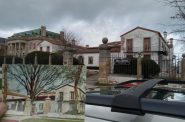 Apr 6th, 2024 by Michael Horne
Apr 6th, 2024 by Michael Horne
-
Notables Attend City Birthday Party
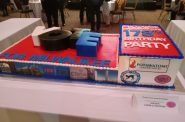 Jan 27th, 2024 by Michael Horne
Jan 27th, 2024 by Michael Horne
-
Will There Be a City Attorney Race?
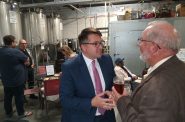 Nov 21st, 2023 by Michael Horne
Nov 21st, 2023 by Michael Horne




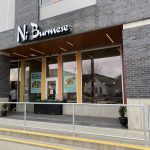
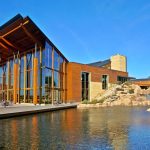
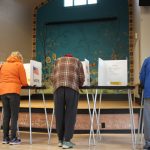









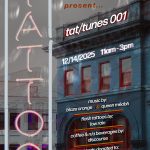





Agreed so much on this, I-43 in Milwaukee County does need a serious facelift. Going south of Downtown, its much improved but going north is study in terrible integration of freeways in a metro area. The Bender Rd. bottleneck is a direct result of politics gone bad. River Hills have always been an impediment to I-43’s development. Its high time that tony enclave got with the program and realized they are part of the problem. Also, Glendale has always thumbed its nose at making any considerations to where they decide to place commercial and residential properties directly abutting the freeway.
As for Farwell and Prospect, its clear that the once dangerous one-way of Wells St. and parts of State St. downtown have allowed for businesses to flourish and helped increase safe pedestrian use (and reduced accidents). I see no reason why making these two densely populated streets two-way is a bad thing.
Uh, plutocrats? Ordinary people use 43, too, and there are definitely times when a third lane would be useful. How many cities of Milwaukee’s size have a two-lane freeway entering town? Few, if any.
#2 Jeff: Milwaukee has many, many ways to enter town. We have plenty of arterial streets, including angled ones, to handle the traffic load, along with an excellent grid of streets. We do not need more lanes of concrete. “Death to the suburbs by any legal means” is my credo. I want to turn them back to cornfields and cemeteries if they don’t behave properly.
Maybe we can build a quadruple decker I43 N-S freeway? Two decks of two lanes going north, two decks of two lanes going south? Now that the transportation fund is sacred ground and a solemn tribute to Zenith Tech, Michaels, WTBA members, and the other road builders, we can get as crazy expensive as we want, right?
“Milwaukee has many, many ways to enter town” – Mr. Horne
“of concern to some, but not the DOT, is that there is only one possible route north to Ozaukee County east of the freeway” – Mr. Horne
So which is it? Are there not enough ways to travel this stretch, or too many? Also, most bikers I know choose Santa Monica through that stretch, though it doesn’t quite make it all the way to Ozaukee County.
Just imagine the traffic jams that would be caused on Farwell and Prospect when someone takes a left turn and has to wait for the oncoming traffic to pass by. Which would be often on Prospect considering that there are many high rise condos.
I am a big fan of making Farwell and Prospect two ways. I understand it has been opposed by merchants in the area, which strikes me as short-sighted since all the research I have seen indicates that one-way streets depress property values. Another particularly bad stretches are Prospect by Colectivo with a mixture of speeders and dawdlers and crossing Prospect/Maryland outside whole foods (also turns Maryland School into an island.
The stretch of Port Washington Rd north of Fairy Chasm is the only route available for bikes east of I43 and is especially dangerous, with gravel on the west and a curb with no shoulder on the east. I have 3 friends who have had accidents there, one of whom has given up riding as a result.
Years ago, state highway 100 was designed as the by-pass route around Milwaukee County. The original layout still exists with highways on the north, west and south sides of the county. (I seem to recall my father saying that all trucks were required to use that by-pass whenever by saw a semi-trailer on a city street on Sunday). Subsequently, the interstate system replaced the use of hyw.100 as a by-pass route. However, no interstate roadway was created to replace the east/west hyw.100 on the north side of the county. Forget I-43. It’s time to complete the by-pass. Build an east/west interstate connecting I-43 with hyw. 45 on the west side. I think Mequon Rd. would be an ideal corridore. It’s time.
Farwell and Prospect are often only one-lane in each direction due to delivery vehicles and cars trying to park. Having no lanes available isn’t going to help businesses. More and better places to cross seem worth looking into.
Regarding I-43, widening it from 4 to 6 lanes through the north suburbs doesn’t seem unreasonable, so long as it doesn’t require taking businesses and residences bordering the expressway right-of-way. However, this project (and all other expressway expansion projects) should not go forward until the state/region/county commit to adequately fund transit services (both existing and expanded bus services and potential rail services) throughout the multi-county metropolitan area. This practice of the state saying that “we do highways, not transit; locals do transit” and then refusing to fund transit or permit localities to fund transit must stop.
Regarding Farwell/Prospect, both streets definitely need a major dose of pedestrian friendly measures. Curb extensions (neck downs, bulb outs) at crosswalks, small safety islands (if converted to two-way), and other such installations would help calm traffic and make for a safer walking environment. Converting both streets to two-way vehicular traffic would also help improve the pedestrian experience; however, before committing to such a change, I would hope that transit improvements (whether streetcar or greatly improved bus service) are also considered at the same time as it is (and will continue to be) a major transit corridor.
I’m not a fan of sprawl myself, but keep in mind there are also people who live in Milwaukee and work in the suburbs who would appreciate a decent freeway system. I have long thought the two lanes on I-43 in the northern part of the metro area are ridiculous in terms of practicality and safety and think adding lanes is well justified and should have been done decades ago. I will also say that being mean-spirited towards suburbanites probably accomplishes nothing other than increasing the degree of polarization between suburbanites and city dwellers.
I lived at Prospect Towers from 2006 – 2008 and am well aware of the traffic issues on Prospect and Farwell. It is certainly an area that requires a lot of vigilance on the part of pedestrians. I will also say that there was a retired school teacher living in the building at that time who was the last of the original residents from when it opened in 1964 (she may still be there). She had never owned a car and mostly walked everywhere, while occasionally using the bus, and had managed to keep from being run over by speeding automobiles over that relatively enormous length of time. I would point out that she was also very conscientious about obeying lights and signals. In the end, patience is still a relatively valuable and beneficial virtue.
I wonder if the city has ever made a study of converting Prospect and Farwell to 2-way.
I recall there was a lot of resistance to proposals to convert other downtown streets, with predictions of gridlock. But they have all turned out to be very successful. My office is on Milwaukee and both it and Broadway are far more pleasant to be around than when they were effectively on and off-ramps for the Park East.
Plus my route to and from the office is more direct.
@ Todd (#11): Let me make sure I’m understanding you right. It’s Andrea Barringer’s fault she was killed by a speeding driver while using a well-lit crosswalk in an area full of pedestrians?
I don’t understand people in Milwaukee’s mentality that it’s okay to drive irresponsibly fast and ignore pedestrians and cyclists. If most drivers in Milwaukee obeyed the speed limit and yield-to-pedestrian laws this wouldn’t even be a problem. We need better crosswalks and bump-outs, etc and some serious enforcement of traffic laws if Milwaukee is ever going to be a safe place to walk.
Sam (#13), Michael’s column states that a long-needed crosswalk was painted at the intersection after the tragedy, so I’m not sure how well it was really marked. I had mentioned patience is an important quality for pedestrians to have (I also recall the terrible accident some years back involving the female Olympic class athlete hit on……Farwell and Brady, I think); clearly, patience on the part of drivers is called for also. I’ve been gone for a few years now but always felt that traffic moved too fast on Farwell, in particular, when I lived in that area. At the same time, this is also an important route for auto traffic on the East Side. I don’t know exactly what would be the wisest course in balancing automobile use against that of pedestrians and bicyclists. I would certainly be open to lowering the speed limit but am not sure if bump-outs like the ones on Brady Street are called for.
My last residence in Milwaukee was in one of the condo buildings on Hubbard a little north of the river. That area apparently had experienced a lot of problems with speeders because there had been speed humps put in place on some of the streets, as well as circular structures resembling roundabouts placed in some of the intersections. For a purely residential zone as this area was, I thought they worked pretty well. I was watching TV one Friday night and heard a loud bang. I looked out the window and saw that a speeding car had smacked right into one of the roundabouts in the middle of the intersection right up the street on Hubbard. The driver and his passenger were okay but couldn’t get the car started and wound up abandoning it. This and the speed humps are too extreme for streets with a lot of traffic, but perhaps bump-outs could be justified. However, I would try lowering speed limits first.
“We do not need more lanes of concrete. “Death to the suburbs by any legal means” is my credo.” – Michael Horne
I realize I’m late to comment on this piece, but I’m just floored at this comment. As much as we hear people ridicule suburbanites who hate the city, this seems just as backwards. Why we have to have this weird ethnocentrism on either side of the city/suburb debate is beyond me. There are plenty of people who find value in all geographical life styles and are willing to let people make their own decisions on how to live.
Unfortunately these ethnocentric extremes are what cause all the problems and clashes in law making, monetary uses, and other such policy decisions which affect both sides. Instead of being reasonable like Eric or Todd, who both say “ok, some of this makes sense, but we also need ‘x’ to happen as well,” Mr. Horne decides that it must be a “winner take all, end anything that benefits people who disagree with me” type situation.
That kind of viewpoint causes more problems then it solves.